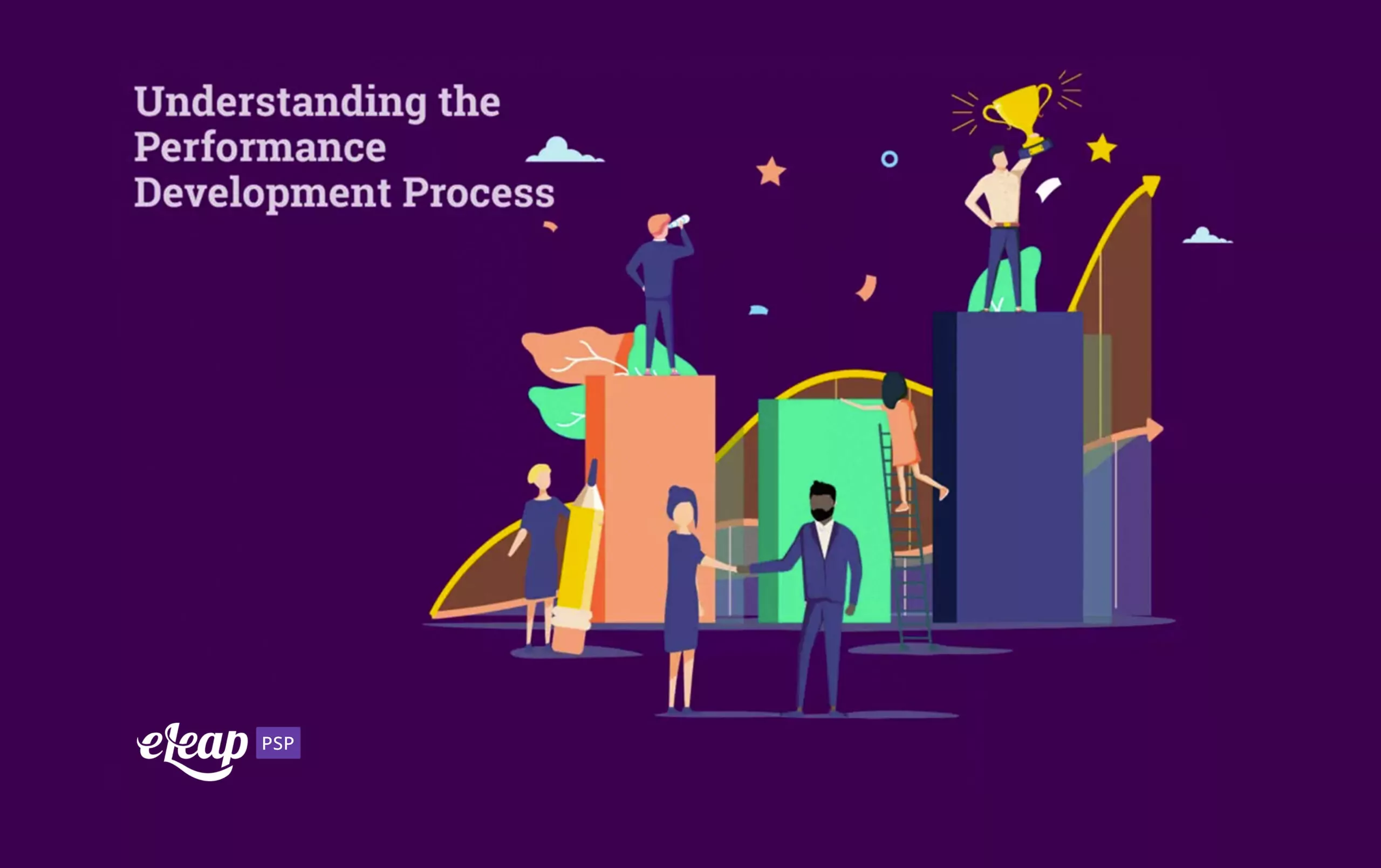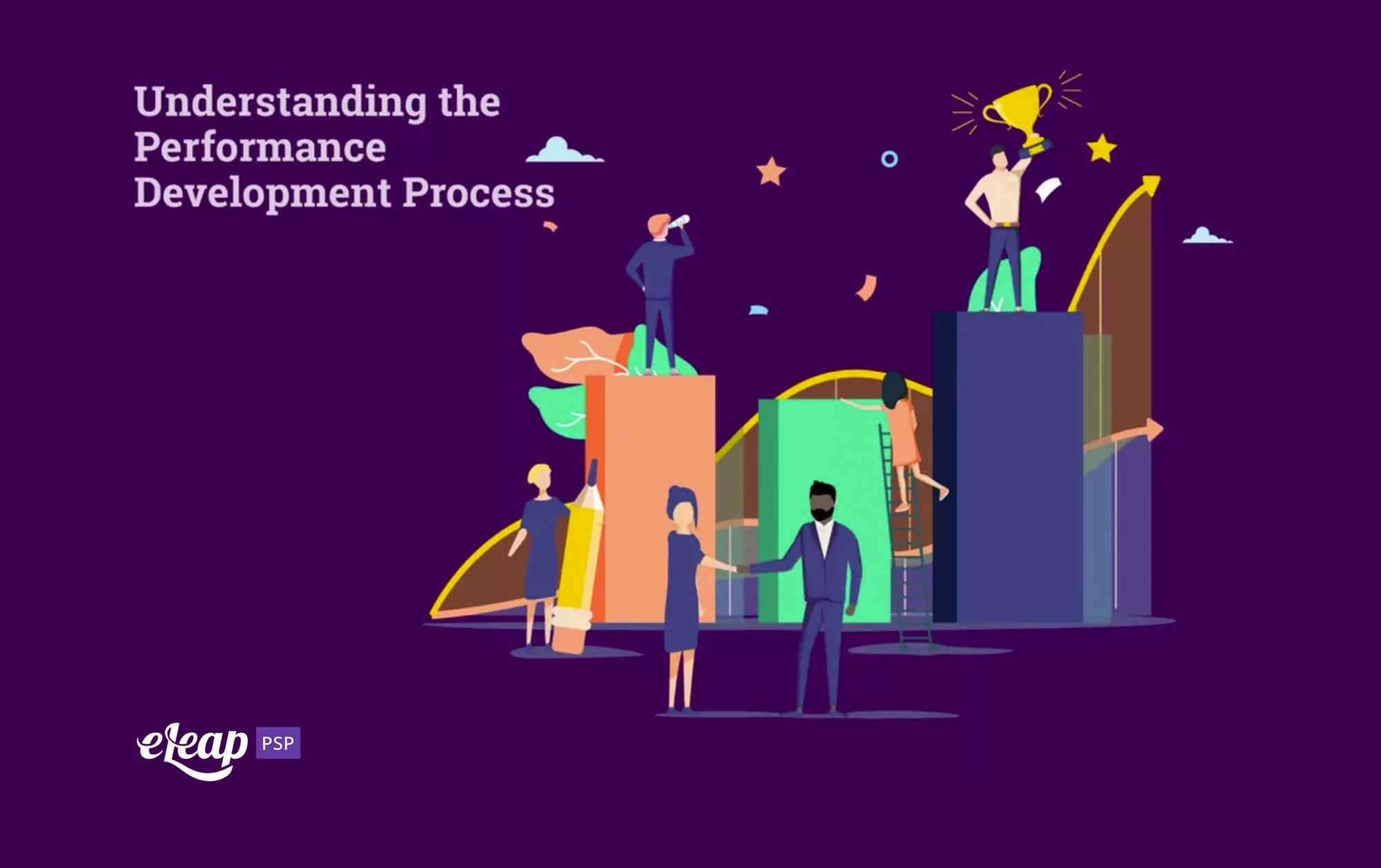Understanding the Performance Development Process

Performance management has taken some hard knocks in recent years. Many organizations have eliminated mainstays like annual performance evaluations. In fact, there is a shift away from performance “management” and toward performance “development.”
The change in nomenclature underscores a change in perception and understanding of management and in terms of employee expectations. Not sure what the performance development process should look like? Unsure what performance development even is? Let’s delve into the topic.

Performance Development vs. Performance Management
Performance management has largely focused on pigeonholing employees. A few boxes ticked, and you have “needs improvement,” “meets expectations,” and “exceeds expectations.” Those designations have taken the place of real people in many instances.
Instead of seeing Judy in sales, who aspires to move into a position where she can put her art and design degree to work, you have “meets expectations.” Those words almost force you to gloss over Judy and her dreams because “meets expectations” is fine and needs no attention. She languishes there, unable to feel that she’s contributing to the best of her abilities.
“Needs improvement” takes the place of Roger in accounting, who is struggling because he actively dislikes his position and his duties. Those words automatically put managers on the offensive and Roger on the defensive, and rather than finding a solution that develops Roger’s abilities and value to the company, chances are good that he’ll be penalized for not meeting arbitrary improvement metrics.
Performance development, on the other hand, focuses on the individual, what they bring to the team, and what they could achieve with the right help. It’s a holistic view of an organization that also delivers tools necessary to help each employee grow, learn, develop, and achieve more personally and professionally.
The Performance Development Process Outlined
The performance development process looks quite different from the performance management process previously used. However, there are some similarities. Your process will also need to be customized to organization-specific needs and requirements, so no two businesses will have an identical process in place.
Alignment
The first thing you must do is align performance management processes with your business objectives. This is much more difficult than you might imagine and will require time and effort to get right. However, when you’re able to connect the dots between performance and business objectives, your employees are more engaged, stay with you for longer periods, and you’ll increase the quality of your new hires.
Change Management Methods
Many organizations find that they need to retrain their managers to help break them out of the old performance management mindset. In this brave new world, they need to put away the carrot-and-stick strategy. Instead, they need to become coaches and mentors. They must guide and assist rather than enforce and reprimand. Change management is difficult and should be tackled with tact. Additional training is usually required to get your management team up to par.
Create the Right Process
As mentioned, your performance development process may not resemble that followed by another organization. However, the same building blocks will be used across the board. These include the following:
- Fair Warning: Make sure that your team knows when you will be conducting performance reviews. At a minimum, this should occur once per quarter, but more frequent reviews are even better. By providing timely notice of reviews, employees can develop their performance plans and strategies.
- Review Performance: In their development plan, each employee should review their performance, including what went right, what went wrong, and where opportunities for growth and development lie.
- Set Improvement Goals: Employees should outline goals for their improvement. These must be specific and aligned with their role on the team, the team’s role in the department, and the department’s role in achieving business objectives.
- Create a Path: Once goals have been set, the employee should state specifically how they intend to reach those goals and what they need from the company or the manager to do that. Some of the steps employees might consider include eLearning, mentorship programs, special projects to build skills and knowledge, and additional training/retraining.
- Setting Milestones: Employees need to set milestones that speak directly to the path they created and the goals they decided to include. How will they measure progress toward key goals? Will those milestones be task-based? Skills-based? Performance-based?
- Support and Resources: Now, the employee will need to identify what resources and support they will need. This might include a lessening of their regular workload, additional check-ins with management, new performance management software, or other tools, as well as anything else necessary to implement the plan and achieve success.
- Review: Once the employee is done with their planning, you and they need to sit down together and analyze it. Study the plan, determine if expectations are understood, check that their goals relate to specific performance issues, and make sure that you can provide the resources necessary.
Use Technology to Support Positive Outcomes
Performance development changes the situation for organizations, upending the conventional performance management system. However, you need to ensure that the right technology is in place to support positive outcomes. A performance management system (PMS) can provide you with the framework necessary to develop your teams, as well as the tools, capabilities, and features necessary to keep track of an organization-wide performance development initiative. Of course, PMS platforms vary a lot in terms of what they bring to the table and what they can enable you to achieve, so it’s important that you compare your options and then make an informed decision.
Achieving Success for Everyone
Performance development is about achieving success for everyone – employees and the organization as a whole. It’s about eliminating the punitive performance management mindset and refocusing on your workforce as a whole. It’s about helping them develop and grow so that they can, in turn, support better outcomes for the business.
Break out of the outdated performance management mindset and, instead, experience the difference forward-facing performance development can do for your teams and your organization.